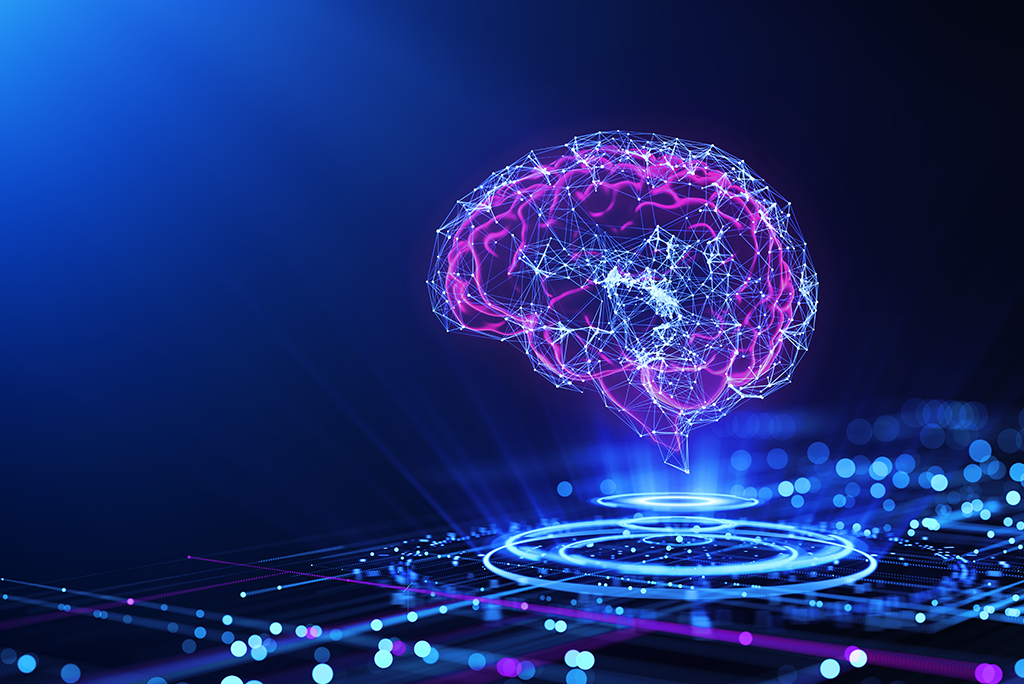
Deep learning is having a moment. There was a time where we could only dream of partially autonomous vehicles and voice-activated assistants. Today, however, these inventions are a regular part of our lives. A subfield of machine learning (ML) and artificial intelligence (AI), deep learning algorithms are designed to learn like a human brain. Deep learning continually analyzes data using an advanced technology known as “artificial neural networks,” which are operated by a series of algorithms that can perceive complex relationships in data sets. These neural networks allow computers to see, hear, and speak—it is the reason we can talk to our phones and dictate emails to our computers.
Algorithms have always been part of the digital world, where they are trained and developed in perfectly simulated environments. The current wave of deep learning facilitates AI’s leap from the digital to the physical world. While the applications are endless—from manufacturing to agriculture—there are still challenges of accuracy, clean data, and reinforcement learning.
Deep Learning in the Real World
AI researchers are working to introduce deep learning to our physical, three-dimensional world. Experts anticipate that deep learning will advance several sectors over the next few years, including:
- Self-Driving vehicle capabilities: The handling of novel situations is the main problem for autonomous vehicle engineers. With growing exposure to millions of scenarios, a deep learning algorithm’s regular cycle of testing and implementation ensures safe driving. Global industry growth for autonomous cars is 16% a year. The global autonomous vehicle market reached nearly US$106 billion in 2021, and one forecast projects it will grow to US$2.3 trillion by 2030.
- Fraud news detection and news aggregation: Deep learning is heavily utilized in news aggregation, which attempts to tailor news to consumers’ preferences. Reader personas are defined with greater complexity to filter out content based on a reader’s interests, as well as geographical, social, and economic factors. Furthermore, there is always room for improvement in filtering out fake news and misinformation.
- Natural Language Processing (NLP): One of the most challenging things for computers to learn is how to comprehend the complexity of human language, including its syntax, semantics, tonal subtleties, expressions, and even sarcasm. The global market for Natural Language Processing (NLP) is expected to reach US$25.7 billion by 2027.
- Healthcare: Some of the deep learning projects gaining traction in the healthcare industry include assisting with the quick diagnosis of life-threatening diseases, addressing the shortage of qualified doctors and healthcare providers, and standardizing pathology results and treatment plans. By 2026, artificial intelligence has the potential to save the clinical healthcare business more than US$150 billion.
Getting “Data-Centric AI” with Deep Learning
Andrew Ng is among the pioneers of deep learning and, according to Fortune, he’s also one of the most thoughtful AI experts on how real businesses are using the technology. Ng has become a champion for what he calls “data-centric AI.” Ng believes developers and businesses should be asking questions like: What data is used to train the algorithm? How is it gathered and processed? How is it governed?
Data-centric AI is the practice of “smartsizing” data so that a successful system can be built using the least amount of data possible. If data is carefully prepared, a company may need far less of it than they think—saving both time and money .Calling it as important as the shift to deep learning that occurred over the past decade, Ng believes that the shift to data-centric AI is the most important shift businesses need to make today.
Be Prepared for Future of Deep Learning
As deep learning facilitates AI’s leap from the digital to the physical world, it is important to stay current with the latest technology advances. The IEEE Academy on Artificial Intelligence is designed for those who work in industry and need to understand new technical information quickly so they can apply it to their work. Learn more about the program>>
Interested in enrolling? Visit the IEEE Learning Network
Resources:
Placek, Martin. (16 January 2023). Size of the global autonomous vehicle market in 2021 and 2022, with a forecast through 2030. Statista.
Carsurance. (20 February 2022). 24 Self-Driving Car Statistics & Facts. Carsurance.
Global Industry Analysts, Inc. (April 2021). Natural Language Processing (NLP) – Global Market Trajectory & Analytics. Research and Markets
Gordon, Nicholas. (30 July 2021). Don’t buy the ‘big data’ hype, says cofounder of Google Brain. Fortune.
Ingle, Prathamesh. (9 July 2022). Top Deep Learning Applications in 2022. Marktechpost.
Fine, Ken. (15 January 2022). How digital experiences are fueling the new digital economy. VentureBeat.
Todorov, Georgi. (20 April 2022). 92 Stunning Artificial Intelligence Stats, Facts and Figures in 2022. Thrive My Way.
Woertman, Bert-Jan. (30 April 2022). Deep learning is bridging the gap between the digital and the real world. VentureBeat.
World Economic Forum. (20 July 2022). Is AI the only antidote to disinformation? The European Sting.


No comments yet.